2nd Annual Progress Report Meeting
From 25th to 27th February 2025, the Annual Progress Report Meeting on Quality Improvement of Health Services was held in Harare. The meeting brought together 108 participants, drawn from representatives from the Ministry of Health and Child Care (MoHCC), Provincial Health Executives (PHEs), target hospitals, development partners, the Embassy of Japan in Zimbabwe, and JICA Zimbabwe Office.
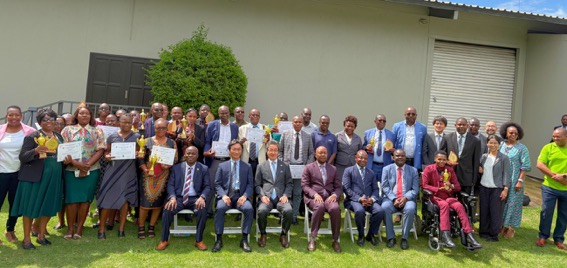
Group photo of representatives from participating institutions
Progress Reports on Quality Improvement Activities and Lively Discussions
During the meeting, 14 target hospitals and 10 PHEs presented the result of internal monitoring and evaluation of Quality Improvement (QI) activities through 5S-KAIZEN-TQM Approach, good practices and challenges in service delivery and workplace environments as well as the outline of activity plan for 2025. Additionally, PHEs also reported on the implementation of QI training and supervisory visits to healthcare facilities within their province.
After every 3 to 4 presentations by the hospitals and PHEs, Q&A sessions was held to facilitate in-depth discussions on the presentations delving on human resource development and quality-related indicators, allowing participants to exchange a wide range of opinions and insights.
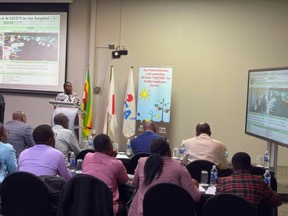
Presentation of good practice of Quick KAIZEN by Gweru Provincial Hospital
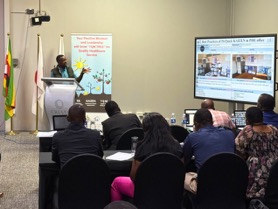
Presentation of good practice of Quick KAIZEN by Matabeleland North PHE
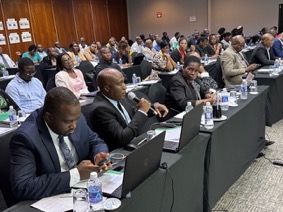
Q&A/discussion session after the presentations
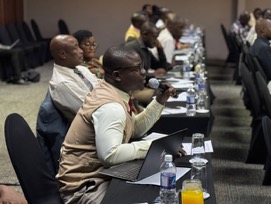
Q&A/discussion session after the presentations
Sharing of Outcomes from Study Tour to Tanzania
One of the key sessions focused on reports from participants who attended a study tour to Tanzania in October 2024. Representative from each target hospital shared the specific actions they took upon returning, including:
- Initiatives to increase revenue collection in the confines of existing legislature (e.g. strategies to increase collection from debtors as well as service value addition like improved commodities availability and full range of diagnostics availability)
- Initiatives to reduce costs while maintaining the quality (e.g. identifying suppliers instead of purchasing from middlemen, manufacturing instead of buying ready-made bin liners)
- Implementation of QI training for doctors and promotion of involving doctors in Quality Improvement Team (QIT)
These initiatives were inspired by practical ideas observed during the site visits in Tanzania, which is demonstrating the effectiveness of the study tour.
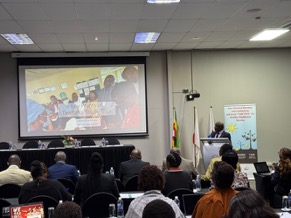
Quality Assurance Officer from MoHCC sharing insights from the Tanzania study tour
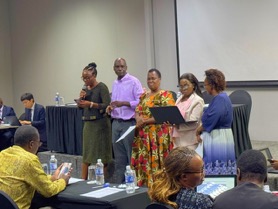
Participants discussing their post-study tour initiatives
Experience Sharing from Non-Target Hospitals
Beyond the target hospitals, Kadoma General Hospital shared its current efforts and implementation status in 5S activities after supports from one of the development partners ended.
Additionally, an online session was held with Allada-Toffo-Ze Zonal Hospital in Benin, where 5S-KAIZEN-TQM Approach was introduced in 2019 with the support of JICA, and is still actively continuing its activities. The hospital director highlighted the importance of tracking quantitative indicators to motivate staff and sustain QI activities.
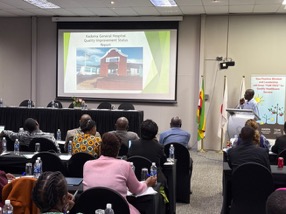
Presentation on 5S activities by Kadoma General Hospital
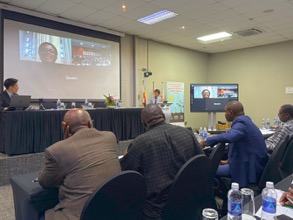
Experience-sharing session with Allada -Toffo-Ze Zonal Hospital in Benin
Panel Discussions
Two panel discussions were conducted on the following themes:
- Theme1: What can HMT/QIT do to foster a mindset shift among staff to effectively promote QI activities for safe and patient-centered care?
The discussion emphasized the importance of leadership, staff empowerment, and creating a learning organization. In particular, it was emphasized that having a clear role and awareness for everyone in a hospital to be involved in QI activities, regardless of their position within the hospital, would lead to the promotion of the activities.
- Theme2: What benefits will QI initiatives gain from the collaboration between HMT and PHE, and how should HMT and PHE promote this collaboration?
The discussion noted that collaboration enables the pooling of resources (human, financial, and material), thereby enhancing QI initiatives. Furthermore, it was discussed that fostering a shared vision of QI among stakeholders at the provincial level was seen as essential for sustainable improvements.
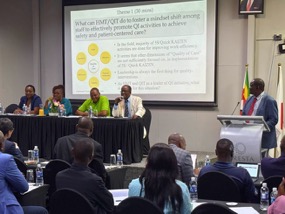
Panelists (left in the photo) discussing Theme 1 and the QAPS Director (right in the photo) moderating the session
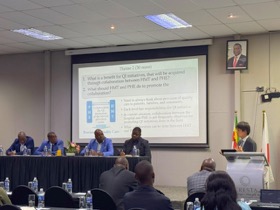
Panelists (left in the photo) discussing Theme 2 and a Japanese expert (right in the photo) moderating the session
Awarding Ceremony
As in the previous year, good practices of 5S and Quick KAIZEN activities were presented, and participants voted to recognize outstanding initiatives.
Awards were also given to the top five hospitals and top three PHEs for Best QIT functions as well as the top three Work Improvement Teams (WITs) for its outstanding 5S-KAIZEN-TQM activities, based on the external monitoring and supervision results.
During the award ceremony, the Permanent Secretary of MoHCC and the Ambassador of Japan to Zimbabwe attended as Guests of Honor, presenting certificates and commemorative gifts to the award-winning institutions.
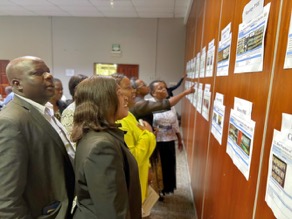
Participants reviewing submitted good practices before casting their votes
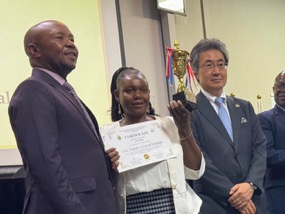
Sally Mugabe Central Hospital receiving the Best QIT Award (from left: the Permanent Secretary of MoHCC, QIT member, and the Ambassador of Japan)
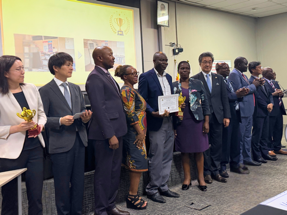
Matabeleland South PHE receiving the Best Provincial QIT Award
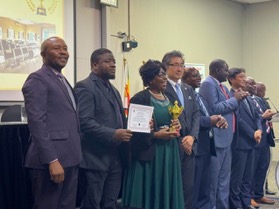
Marondera Provincial Hospital receiving an award for outstanding best practice
This annual report meeting confirmed the steady progress made by each hospital in QI activities. Moving forward, the project will continue collaborating with stakeholders to promote quality healthcare services through 5S-KAIZEN-TQM Approach in Zimbabwe.
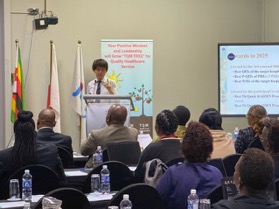
Japanese expert explaining the program and award criteria
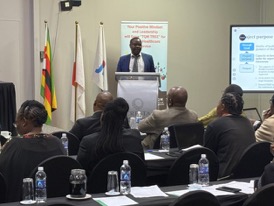
Deputy Director of QAPS Directorate presenting an overview of the project and its progress
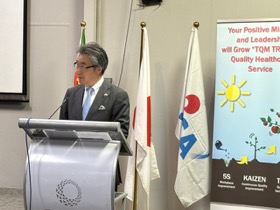
Keynote speech by the Japanese Ambassador to Zimbabwe
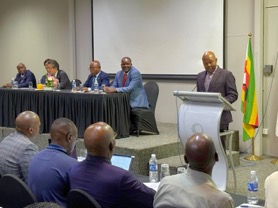
Keynote speech by the Permanent Secretary of MoHCC
